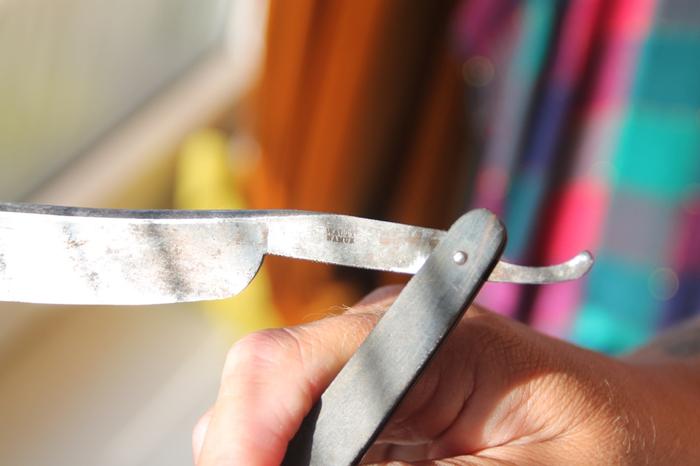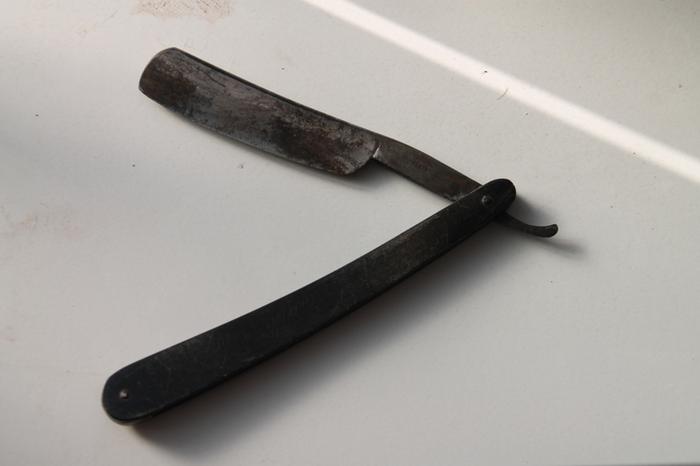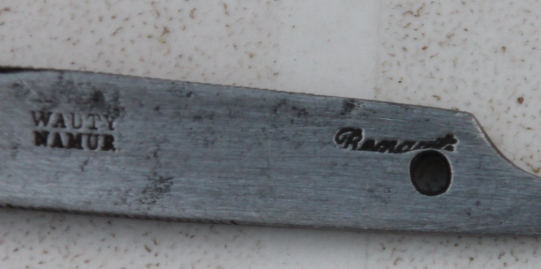Results 1 to 5 of 5
Thread: I looking for some info
-
09-07-2012, 05:01 PM #1
 I looking for some info
I looking for some info
i have a razor named "Wauty Namur" but can not find any info about this name/razor
i want to clean him up but also like the history behind the name.
"Namur" < think its from Belgium but don't now for sure, and than the name Wauty ....???
The scales are from old horn
Someone a idea about this one??


Last edited by kalerolf; 09-07-2012 at 05:03 PM.
-
09-08-2012, 06:34 AM #2

I found the name Wauthy placed in Liège in a genealogy search, but no info at all about any razor makers or priducts of that name. Anyways, looks to be an interesting piece you found there. I would have guessed french 1850-1880. Of belgian razor producers I am afraid I know nothing..
Let's see how it turns out after it's restored
-
The Following User Says Thank You to str8fencer For This Useful Post:
kalerolf (09-10-2012)
-
09-08-2012, 11:45 AM #3Senior Member



- Join Date
- Apr 2008
- Location
- Essex, UK
- Posts
- 3,816
Thanked: 3164
It seems that there are a lot of names like that in Namur - Wauty/Wauthy/Wauthie etc, and that it is a long established surname: I found a porcelain teas service with porcelain-handled knives from the 1700s while googling the name! Your razor is an older design (sometimes called 'coupe-choux' = 'cabbage-cutter'!) that is often seen without a tail - I have several examples like this. Like yours, they all seem to be in horn scales, nothing fancy, just flats cut from a sheet of horn, with a real bone wedge - bugs seem to like eating these scales a lot!
The ones without a tail are older in my opinion, although tail and tail-less versions overlapped I would put yours around 1880 to as late as 1920. The ones with bone wedges (often aged to a deep yellow/brown colour) seem to be a bit older and a bit more 'agricultural' in finish compared to ones with lead wedges.
Namur seems to have been ideally situated for metal-working trades, being situated where two major rivers join. Today it is still important for leather, porcelain and metalwork.
Regards,
Neil
-
The Following 2 Users Say Thank You to Neil Miller For This Useful Post:
kalerolf (09-10-2012), str8fencer (09-08-2012)
-
09-10-2012, 03:32 PM #4

Thanks guys. its sometimes difficult to determine where and when a razor is made.
But always interesting to know how or what .
.
Hope more people respond with a puzzle piece.
Thanks.
-
09-10-2012, 05:43 PM #5

I cleant him a little up and there came another name on the tang visible.
im going to look for a better magnifying glass. i think its "Ramant"

Last edited by kalerolf; 09-10-2012 at 06:37 PM.


 2Likes
2Likes
 LinkBack URL
LinkBack URL About LinkBacks
About LinkBacks







 Reply With Quote
Reply With Quote